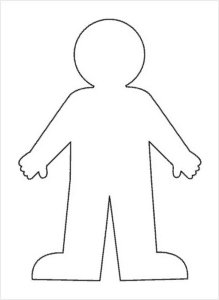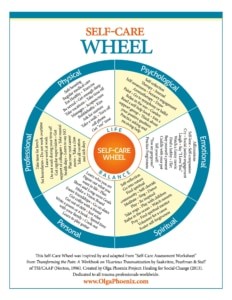Weekly Intervention Ideas : April 6th Edition
Kid strategy of the week:
- Emotions in the body: Have your client draw a basic outline of their body, or draw it together using the screen share function. Ask your client to color in the parts of the body where they feel different emotions.


Couples strategy of the week:
Link to take the Love Languages quiz:
https://www.5lovelanguages.com/profile/couples/
Write down the order of your love languages here:
| Partner 1 | Partner 2 |
| 1. | 1. |
| 2. | 2. |
| 3. | 3. |
| 4. | 4. |
| 5. | 5. |
Compare your lists. What’s the same? What’s different?
Now I want each of you to make a list of things that would make you feel loved, using your top two love languages. This is a way for you to explore the things that you really value, and it’s a way for your partner to get some ideas for ways to make you feel loved.
| Ways that Partner 1 Feels Loved | |
| Top Love Language: | Second Love Language: |
| 1. | 1. |
| 2. | 2. |
| 3. | 3. |
| Ways that Partner 2 Feels Loved | |
| Top Love Language: | Second Love Language: |
| 1. | 1. |
| 2. | 2. |
| 3. | 3. |
Adult strategy of the week:
- Self-care Wheel: During a pandemic
- Many of us have used the self-care wheel with clients before in therapy. However, this may be a good time to re-evaluate self-care since people can’t go to the gym, get together with friends, etc. Additionally, there is a lot of pressure to accomplish big goals during this time.
- Instead, help client identify small, realistic self-care goals focused on this stage of life we’re in. Some examples might be:
- Facetime friends
- Take a break from social media/the news
- Feed myself with the food I have available (without guilt)
- Taking regular showers
- Sticking with sleep hygiene or a bedtime routine
- Reaching out to an elderly relative to help
- Blank one: Self-Care Wheel

Mindfulness/Meditation of the week:
Body Scan
Begin by bringing your attention into your body.
You can close your eyes if that’s comfortable for you.
You can notice your body seated wherever you’re seated, feeling the weight of your body on the chair, on the floor.
Take a few deep breaths.
And as you take a deep breath, bring in more oxygen enlivening the body. And as you exhale, have a sense of relaxing more deeply.
You can notice your feet on the floor, notice the sensations of your feet touching the floor. The weight and pressure, vibration, heat.
You can notice your legs against the chair, pressure, pulsing, heaviness, lightness.
Notice your back against the chair.
Bring your attention into your stomach area. If your stomach is tense or tight, let it soften. Take a breath.
Notice your hands. Are your hands tense or tight. See if you can allow them to soften.
Notice your arms. Feel any sensation in your arms. Let your shoulders be soft.
Notice your neck and throat. Let them be soft. Relax.
Soften your jaw. Let your face and facial muscles be soft.
Then notice your whole body present. Take one more breath.
Be aware of your whole body as best you can. Take a breath. And then when you’re ready, you can open your eyes.



